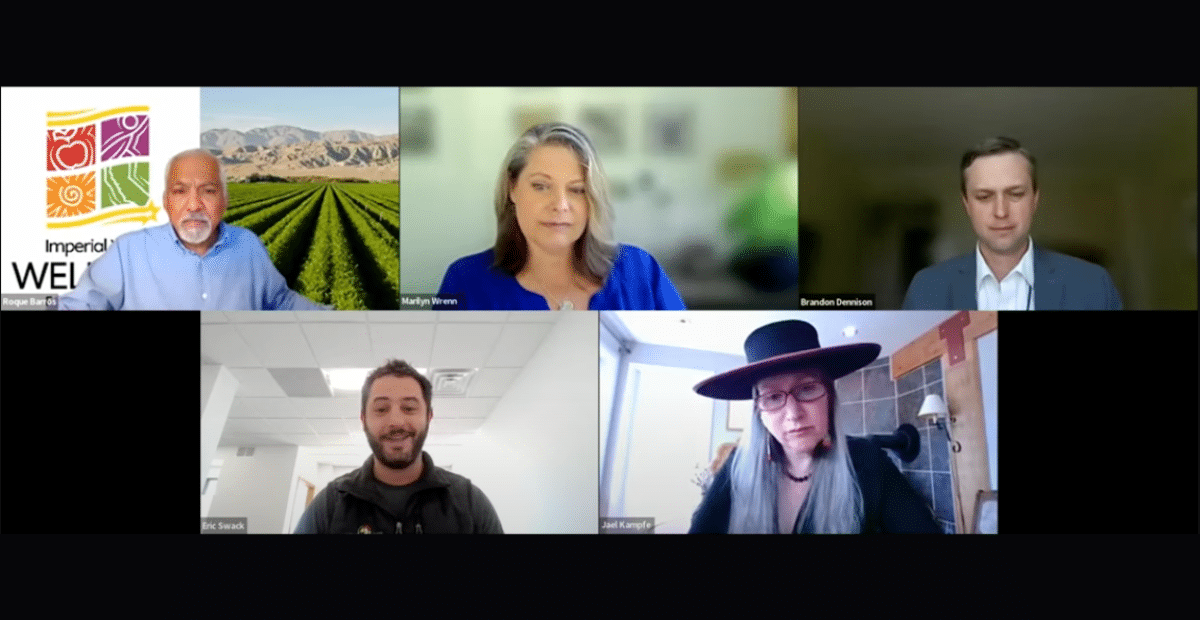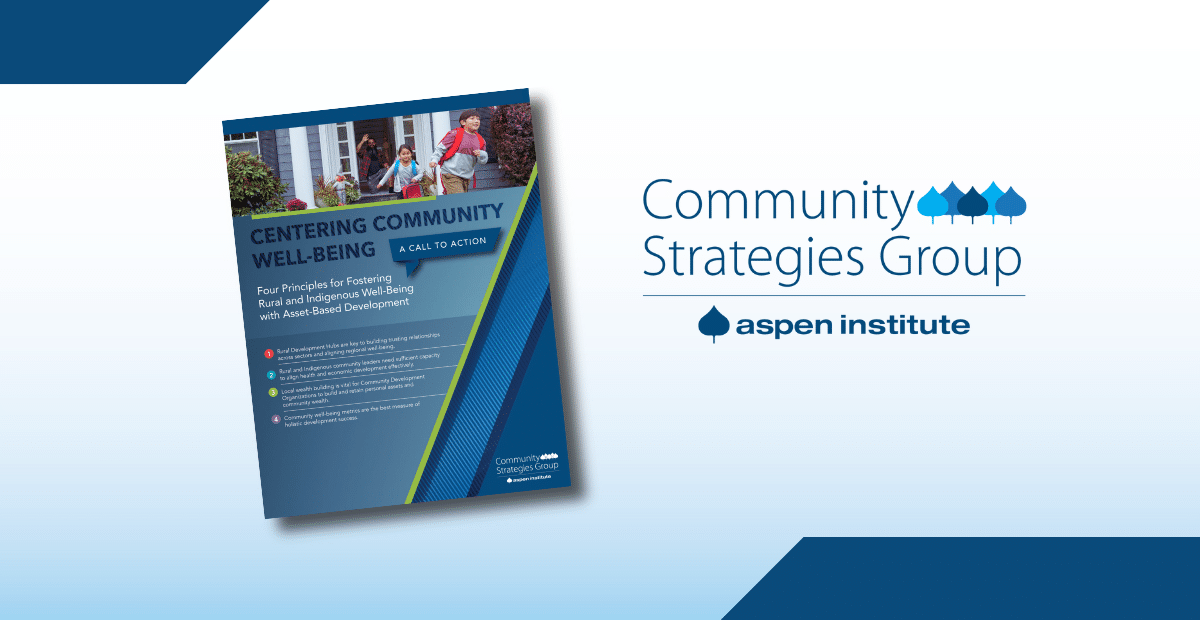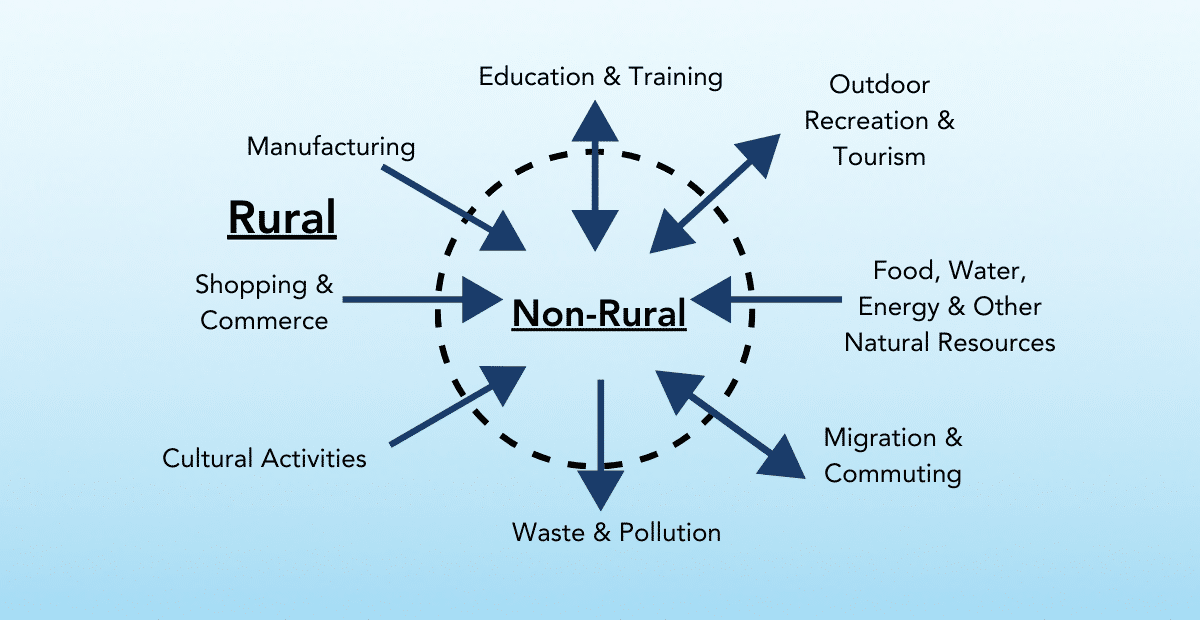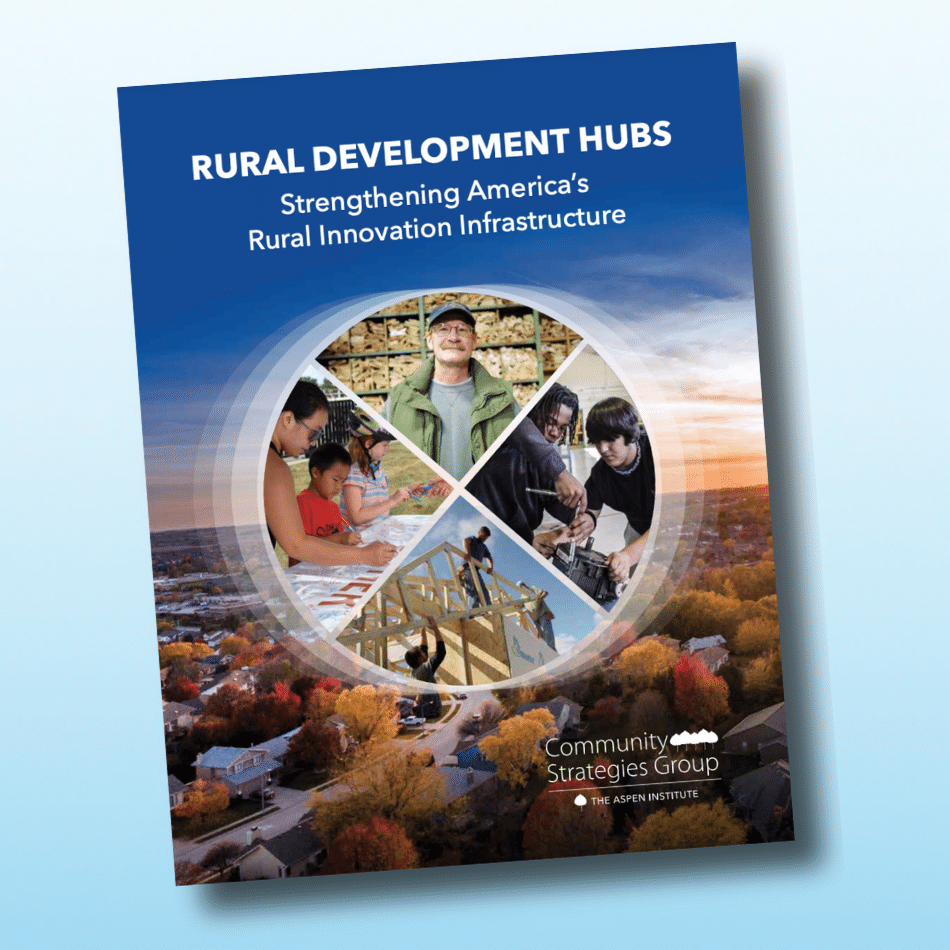On April 12, 2023, the Rural Opportunity and Development Sessions (ROADS) showcased speakers from two collaborations that are working regionally to grow opportunities and that have recently drawn down millions of dollars in federal grants: Eric Swack from the Mountain | Plains Community Development Corporation and Jael Kampfe from Indigenous Impact Co are members of the Mountain | Plains Native Community Development Financial Institution (CDFI) Coalition. Brandon Dennison and Marilyn Wrenn from Coalfield Development are members of the Appalachian Climate Technology (ACT) Now Coalition.
This timely conversation was moderated by Roque Barros from the Imperial Valley Wellness Foundation and hosted by Aspen CSG, one of the ROADS partners.
This blog gathers resources and big-picture insights shared during the event. You can watch the event recording, read the speaker bios, and view the PowerPoint on the event webpage.
“This is a timely conversation for us because small communities of 200 or 500 people are getting together to make sure that they’re not left further behind. Especially in a moment like this, how do small communities make sure that they’re in these conversations [about federal funding], that they know how to connect and collectively join ongoing conversations? This is really important for all of us in the Imperial Valley.”
Roque Barros, Executive Director, Imperial Valley Wellness Foundation
Coalition building as a path to regional resources
The primary strategy outlined during the event for rural and Indigenous communities to be better positioned to benefit from federal resources is for multiple communities and organizations to join together in regional coalitions. Regionalization allows smaller population communities to join together to develop more competitive federal applications that achieve the economies of scale required by some larger federal grants. Often led by one or more rural development hubs – place-rooted organizations working hand-in-glove with the community to advance equitable prosperity – regional efforts weave together action across a wide multi-county or even multi-state geography.
“The Mountain | Plains Native CDFI Coalition formed as a peer-to-peer support network in February 2020. We started looking at how to grow the industry across the region and leverage each other’s resources to grow collective capacity and leverage larger dollars, one of the challenges for rural work. Individually we don’t have the numbers to leverage the larger scale dollars, but by coming together collectively, we are able to show the scale of impact that can leverage and unlock resources to start meeting the need in our communities…We have to start coming together and working collectively if we’re going to impact systemic change.”
Jael Kampfe, President, Indigenous Impact Co.
Collaborative coalitions allow smaller organizations to have an impact within individual communities and across entire regions. For instance, the ACT Now Coalition formed with the goal of a just transition from coal that establishes West Virginia as the global leader in climate resilience, is led by community-based organizations like Coalfield Development, and includes municipalities, universities, unions, and local businesses. As Marilyn Wrenn explained, the core of Coalfield Development’s work is preparing the workforce for new economic opportunities. But to make a bigger impact across the entire state, Coalfield Development cultivated coalition partners, allowing them to leverage almost one billion dollars of federal and non-federal investments in the coalition’s tried and true just transition workforce and economic development efforts.
Collaboration on federal applications can change systems
Lack of organizational capacity often presents a big hurdle for rural communities competing for federal resources. In order to apply and win federal opportunities, a rural-serving organization needs to know about the funding opportunity, put together a competitive application within the timeframe set by the federal government, and have the staff and resources necessary to administer that grant successfully. And these factors don’t even consider the reality that many federal grants are not designed with rural communities in mind and that available grants often do not meet rural needs.
Regional collaboration can change this equation for the better. Collaborative efforts have greater capacity than any one individual organization, and the collective voice of multiple rural-serving organizations, groups, and communities means greater collective power to influence systemic decisions on how federal agencies write and administer grants.
“The real work is to get federal entities to meet us halfway and design programs and application systems that work for us, for our boots on the ground. Very small communities have limited capacity. I actually think it’s a real testament to EDA that through the first nine months of the grant process, they’ve continued to show up. So, in addition to modeling coalition building as a method of getting money into these communities, our coalition continues to work on the other side to make these programs more accessible.”
Eric Swack, CEO, Mountain | Plains Community Development Corporation
For Jael Kampfe, the collective power of a coalition can jointly support either an internal position or an external consultant who can be a shared resource among all the coalition partners, so that they can go after federal resources together. A region coming together and employing a shared position dedicated to federal applications means more capacity, and someone to advocate and coordinate across geography and organization.
Inclusive coalitions build capacity for individual members
In forming and maintaining a regional coalition, keeping an abundance mentality is key for Brandon Dennison, CEO of Coalfield Development and ACT Now Coalition member. For too long, small nonprofits and small communities have been forced to compete against one another for a very small amount of resources. Part of the shared work in a coalition is to shift the mindsets of partners to view each other as collaborators and not competitors. This can be a difficult transition, as traditionally, organizations have been forced to bootstrap and shoestring their work. But through consistent and effective internal communication, regional efforts can come together for the collective benefit of all partners involved.
“One of our core principles is inclusion. Inclusion doesn’t really work if you just say we’re this coalition that formed nearly two years ago, and we were inclusive then, but now we’re not adding any new members. Our MOU identifies current members who would be voting members, leaving a couple of voting slots blank with the intention of purposely leaving space for new members not just to participate but to have decision-making authority. So as we expand and work with new communities and lift up new voices, there’s space custom ready for them at the table.”
Brandon Dennison, CEO, Coalfield Development
Dennison explained how the ACT Now Coalition members sign a collaboratively designed and inclusive memorandum of understanding (MOU) that articulates the shared principles and strategies of the coalition. A living document now in its third iteration, the MOU sets up a system of consensus decision-making amongst all partners and identifies an odd number of formal voting members so that if consensus is not obtained, there can be a vote to prevent grinding to a halt. So far, the coalition has achieved consensus on all its decisions and has not had to vote.
Similarly, the Mountain | Plains Native CDFI Coalition centers a three-strand braid of principles in its work: amplifying the strength of member organizations and building capacity locally, unifying action to leverage regional assets and opportunities, and sustaining generations through systemic change that scales equitable solutions. As part of the coalition’s work to amplify the strength of its members, the coalition has established a new organization, the Mountain | Plains CDC, that is providing non-physical infrastructure development for all coalition members by centralizing expensive but critical back-of-house business operations. This newly added capacity strengthens each individual member of the coalition.
Resource List
The resources, organizations, and programs below were shared by the webinar speakers and by event participants via the chat box. These are not necessarily endorsed by ROADS partners, but we look forward to exploring them with you.
- Aspen CSG’s Rural Development Hubs Report identifies and examines why these regional players are so critical to the field.
- Aspen CSG’s collection of resources related to capacity building, including a previously recorded ROADS webinar on technical assistance and organizational capacity.
- Aspen CSG’s Federal Resources page has many rural-focused federal opportunities and is updated regularly.
- Water Technical Assistance help from the Environmental Protection Agency
- National Endowment for the Arts Challenge America program which includes technical assistance for building an onramp for more robust federal funding.
- One new opportunity for technical assistance is through the Transportation Alternatives Program. This DOT program funds transportation projects like multi-use trails, bike lanes, sidewalks, etc. In the new transportation bill, State DOTs can now use up to 5% of that funding for technical assistance toward communities that lack the capacity to access the funds.
- Many current and coming opportunities to help access Environmental and Climate Justice funds from EPA with the new Inflation Reduction Act.
- The Department of Transportation just selected its four technical assistance providers under the Thriving Communities Program, and there will be more info rolling out soon.
- Milken Institute’s 10,000 Communities Initiative works to ensure that cross-sectoral attention, federal technical assistance funding, and impact capital are effectively deployed to the underserved communities that need it most.
- The Economic Development Agency recognized Councils of Government in your area may have capacity-building assistance.
- Fuerza Local (Local First Arizona) is a non-profit organization that works to strengthen local communities and economies through the support, maintenance, and celebration of local businesses throughout the state of Arizona. They have an economic recovery center and support capacity-building navigators.
- LinkedIn was suggested as a great platform to share ideas and build connections.
Next Up: ROAD Session
Join us in person in DC or virtually for our next hybrid Rural Opportunity and Development Session on August 1.
About the ROAD Sessions and Organizing Partners
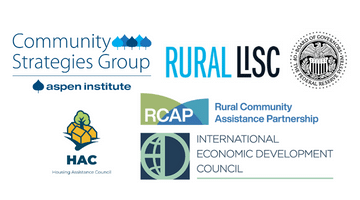
The ROAD Sessions highlight and unpack rural development ideas and strategies that promote access to inclusive economic opportunity and long-term resilience. ROAD Sessions feature stories of on-the-ground practitioners with experience, wisdom, and savvy to share. The series reflects and emphasizes the full diversity of rural America, spotlights rural America’s assets and challenges, and lifts voices and lived experience from a wide range of rural communities and economies. Each Session includes an added opportunity for peer exchange.
Overall, the ROAD Sessions aim to infuse practitioner stories and lessons into rural narratives, policymaking, and practice across the country and to strengthen the network of organizations serving rural communities and regions.
The ROAD Sessions are virtual exchanges co-designed as part of Thrive Rural – an effort of the Aspen Institute Community Strategies Group with support from the Robert Wood Johnson Foundation – and in collaboration with the Housing Assistance Council, the Rural Community Assistance Partnership, Rural LISC, the International Economic Development Council, and the Federal Reserve Board.

